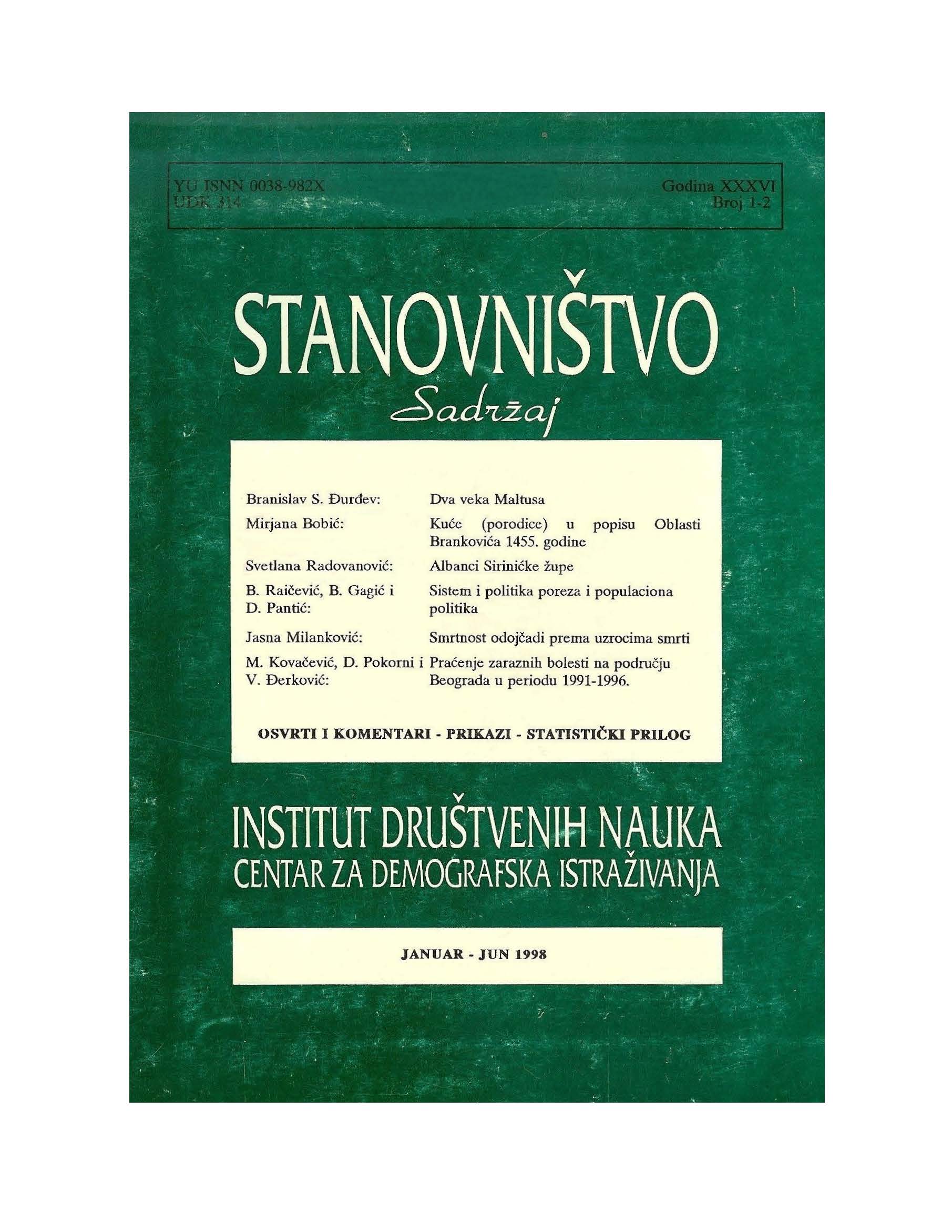Infant Mortality by Cause of Death
Main Article Content
Abstract
Infant mortality is still a major problem in our country as its level has remained relatively high by European standards. This points to the need for better preventive measures particularly as regards infant mortality and other adverse consequences of pregnancy, as key indicators of health and health care for mother and child. Namely, the analysis of movement in infant mortality in low mortality countries shows that it can be decreased relatively easily if certain social and health care measures are undertaken. For that reason, it is necessary to engage in permanent organized research to explain and measure both the relative impact of individual factors or groups of factors in our country which are significant in terms of infant mortality and their mutual relationships. We should also try to gain from the experiences of other countries which had already made progress in this respect. One of the elements of prevention is certainly the analysis of causes of infant morbidity and mortality primarily during the pre-natal period with the aim of specifying the most frequent causes of death to enable their elimination and to induce a subsequent decline in infant mortality. Besides showing the efficiency of health service activities, data on causes of infant death also point to the specific measures that should be undertaken and may be used as a base for planning and programming the development of health services, i.e. implementation of health policy as part of the population policy. With the decline in infant mortality in our country there has also been registered a change in the composition of diseases as the most frequent cause of death. During the initial observation period when the general level of infant mortality was exceptionally high, the share of infectious diseases and those of the respiratory system was very large. These deaths were mainly induced by exogenous factors, that is the diseases which the society in general and health services in particular could most easily have checked both by measures to improve the general living conditions and by preventive and curative health care measures. The period from 1989 to 1996 is characterized by endogenous causes of infant mortality primarily during the neonatal period and have to do with the constitutional features of the live-born children, congenital anomalies, premature birth, respiratory distress, etc. Thus, from the socio-medical point of view, the primary causes of infant mortality in this period are genetically induced or can be attributed to the mother in labour birth which modern men and modern medicine cannot influence to a larger extent. The analysis of infant death frequency by group of causes of death points that there still exist possibilities of eliminating the exogenous causes of death (as the same causes prevail in the socio-economically least developed regions of the country). Besides, some improvement can also be expected in the area of endogenous mortality (improvement in pre-natal diagnostics and other measures of health care for pregnant women and those who have just given birth, better conditions for child delivery and application of modern techniques to care for the prematurely born children. The semanatal mortality is probably the major socio-medical problem in our country both because it accounts for the highest percentage in neo-natal mortality and because it displays an almost negligible downward tendency. This justifies another request - for a more extensive and comprehensive analysis of this problem as well as for participation of other scientific disciplines besides medicine. Among the leading causes of semanatal mortality in the most recent observation period are premature birth, congenital anomalies, respiratory distress syndrome and intrauterine hypoxia and asphyxia at birth.
Downloads
Article Details

This work is licensed under a Creative Commons Attribution-NonCommercial 4.0 International License.
Published by the Institute of Social Sciences - Center for Demographic Research





